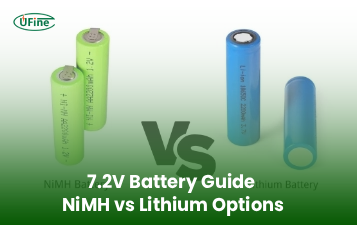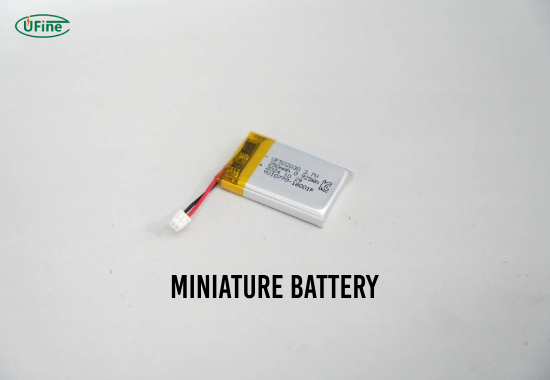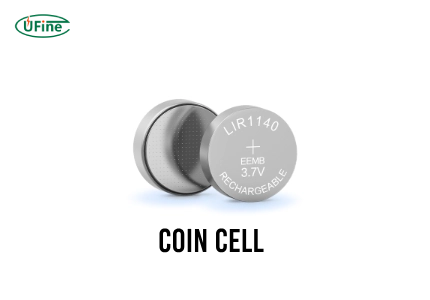
- Part 1. What is a miniature battery?
- Part 2. What is a coin cell battery?
- Part 3. What are the key differences between miniature batteries and coin cells?
- Part 4. Where are miniature batteries commonly used?
- Part 5. Where are coin cell batteries commonly used?
- Part 6. How long do these batteries last in devices?
- Part 7. Can all miniature batteries be recharged?
- Part 8. Which battery is safer to use?
- Part 9. How to choose the right battery for your device?
- Part 10. Which battery is more cost-effective in the long run?
- Part 11. FAQs about miniature battery and coin cell
- Part 12. Final Thoughts
If you’re comparing a miniature battery with a coin cell for your device, you’re not alone. Many people wonder which one is better. Here’s the quick answer: a miniature battery provides higher power output and is ideal for high-drain devices, while a coin cell offers long-lasting energy for low-drain electronics.
In this guide, we will explore the features, types, advantages, and best use cases for both miniature batteries and coin cells. After reading, you’ll be able to make the right choice for your specific device.
Part 1. What is a miniature battery?
A miniature battery is a small, compact power source used in portable and precision electronics. These batteries are designed to deliver a steady flow of power in a limited space. They come in various shapes and sizes, and are available in rechargeable and non-rechargeable formats.
Common types of miniature batteries include:
- Silver Oxide (SR): Stable voltage, commonly used in watches and medical devices
- Alkaline (LR): Affordable, short lifespan, used in toys and flashlights
- Zinc-Air (PR): High energy density, mostly used in hearing aids
- Lithium-ion (Li-ion): Rechargeable, used in compact electronics like wireless earbuds
- Nickel Metal Hydride (NiMH): Rechargeable, used in medical monitors and portable gadgets
Miniature batteries are often cylindrical or slightly rounded in shape. They deliver between 1.2 volts and 3.7 volts, depending on the chemistry and model.
Part 2. What is a coin cell battery?
A coin cell battery, also known as a button cell, is a small, flat, round battery resembling a coin. These batteries are widely used in compact, low-power devices that require a stable and long-lasting power source.
Common types of coin cells include:
- Lithium (CR): Popular for long shelf life, used in car keys, fitness trackers, and remote controls
- Silver Oxide (SR): High energy density, used in watches and calculators
- Alkaline (LR): Least expensive, shorter life, used in toys and remotes
- Zinc-Air (PR): Used mainly in hearing aids due to high energy output in small size
Coin cells usually deliver between 1.5 volts and 3 volts, and they are typically non-rechargeable. The diameter can range from 5 mm to 25 mm, and the thickness is often between 1 mm and 6 mm.
Part 3. What are the key differences between miniature batteries and coin cells?
To help you choose the right type, here’s a detailed comparison based on real-world data:
| Feature | Miniature Battery | Coin Cell Battery |
|---|---|---|
| Typical Voltage | 1.2V (NiMH), 1.5V (Alkaline), up to 3.7V (Li-ion) | 1.5V (Alkaline), 1.55V (Silver Oxide), 3V (Lithium) |
| Capacity | 30 mAh to 600 mAh | 35 mAh to 240 mAh |
| Common Sizes | AAAA, 312, 675, 10440 | CR2032, SR626SW, LR44, PR41 |
| Rechargeable Available | Yes (NiMH, Li-ion) | Rare (few lithium coin models) |
| Shelf Life | 1 to 3 years (non-rechargeable) | 3 to 10 years |
| Power Output | High (suitable for high-drain devices) | Low to moderate (for low-drain devices) |
| Typical Use Cases | Hearing aids, medical tools, laser pointers | Watches, calculators, remote controls |
| Cost (per unit) | $0.50 to $4.00 | $0.15 to $2.00 |
| Size Profile | Cylindrical or thick round | Flat and compact |
Miniature batteries are generally better for devices that need frequent bursts of energy, while coin cells are preferred for gadgets that use minimal power over long periods.
Part 4. Where are miniature batteries commonly used?
Miniature batteries are used in devices that require consistent or high output. These include:
- Hearing aids: Often use zinc-air batteries (size 312 or 675) for powerful and continuous performance
- Thermometers: Need a quick power-up and accurate readings
- Laser pointers: Require bursts of high-energy output
- Blood glucose meters: Need steady, reliable power
- Wireless earbuds: Use rechargeable lithium-ion miniature cells
If your device performs tasks continuously or requires high energy, a miniature battery is likely the right choice.
Part 5. Where are coin cell batteries commonly used?
Coin cells are perfect for low-drain devices that require long-lasting power. They are commonly used in:
- Wristwatches: One of the most frequent uses, especially silver oxide cells
- Calculators: Operate for years on a single coin cell
- Remote controls: Especially for cars and garage doors
- Fitness trackers: Lightweight and efficient
- Digital thermometers: Require small bursts of power occasionally
Because of their compact size and long life, coin cells are preferred in devices that operate for extended periods without battery changes.
Part 6. How long do these batteries last in devices?
Battery lifespan depends on usage, battery type, and device power consumption.
Miniature battery life:
- Hearing aids: 3 to 10 days (zinc-air)
- Glucose meters: 6 months to 1 year
- Portable monitors: 3 to 9 months (rechargeable)
Coin cell battery life:
- Wristwatches: 2 to 5 years
- Calculators: 3 to 7 years
- Fitness trackers: 6 months to 1 year
- Remote controls: 1 to 3 years
Coin cell batteries last longer in static, low-power environments, while miniature batteries are more suited to power-intensive tasks.
Part 7. Can all miniature batteries be recharged?
No, not all miniature batteries are rechargeable. The rechargeable types include:
- Nickel-Metal Hydride (NiMH)
- Lithium-ion (Li-ion)
These are used in hearing aids, wireless earbuds, and smart medical tools.
Non-rechargeable types include:
- Alkaline
- Silver Oxide
- Zinc-Air
Always check the packaging or product manual to know if the battery is rechargeable.
Part 8. Which battery is safer to use?
Both battery types are safe when used correctly, but there are some precautions:
- Coin cells can be swallowed by children or pets, leading to serious injury
- Miniature batteries are often sealed and used in professional equipment, so less likely to pose a hazard
Safety tips:
- Store batteries in child-proof containers
- Avoid mixing old and new batteries
- Recycle used batteries responsibly
Some manufacturers now add bitter coatings to coin cells to discourage children from swallowing them.
Part 9. How to choose the right battery for your device?
Choosing the right battery starts with understanding your device’s needs.
Follow this checklist:
- Check the manual to find the recommended battery size and type
- Understand power needs: Does your device require long-term power or high bursts?
- Consider size and shape: Will the battery fit in the compartment?
- Rechargeable or not: Does the device support recharging?
- Brand matters: Choose trusted brands for safety and performance
If your device needs steady, low power, go with a coin cell. If it needs more frequent or high output, choose a miniature battery.
Part 10. Which battery is more cost-effective in the long run?
At first glance, coin cells are cheaper. But if you use them in devices that drain power quickly, you’ll end up replacing them often.
Miniature rechargeable batteries may cost more up front, but they can be recharged hundreds of times, making them more cost-effective for high-use devices.
Cost comparison:
- Coin cell (CR2032): $0.50 each, lasts 1 to 3 years
- Miniature Li-ion: $5 each, rechargeable over 300 times
- Zinc-air (hearing aid): $0.40 each, lasts 3 to 7 days
Choosing based on usage patterns will save you money and reduce waste.
Part 11. FAQs about miniature battery and coin cell
What is the main difference between a miniature battery and a coin cell?
Miniature batteries are better for high-drain, short-term use, while coin cells are ideal for low-drain, long-term use.
Can I replace a miniature battery with a coin cell?
No, unless the device specifically supports both. Each battery type has different voltage, size, and current output.
Are coin cells rechargeable?
Most coin cells are not rechargeable. Only a few lithium coin batteries have rechargeable versions, and they are rare.
How should I store unused batteries?
Store in a cool, dry place away from metal objects. Avoid exposure to heat and moisture.
Which battery lasts longer in storage?
Coin cells, especially lithium types, can last up to 10 years in storage. Miniature batteries usually have a shorter shelf life.
Part 12. Final Thoughts
Choosing between a miniature battery and a coin cell depends on your device’s size, power requirements, and usage habits. For compact, low-energy electronics, coin cells are ideal. For devices that need frequent or high power, miniature batteries are the better option.
Always select the right battery type, follow safety guidelines, and choose quality for optimal performance.
Related Tags:
More Articles

NiMH vs Lithium 7.2V Battery and Charger: Which Is Better?
Compare 7.2V NiMH vs Lithium batteries and chargers in 2025. Learn runtime, weight, charging, lifespan, and cost to choose the best for your device.
How to Choose the Right 7.2V Battery and Charger for Your Device?
Learn how to choose the right 7.2V battery and charger for optimal performance, safety, and longevity across RC, tools, medical, and industrial devices.
Big Square Battery Safety Standards You Must Know
Learn key safety standards for big square batteries to avoid fire risks, shipping delays, and compliance issues in EV, industrial, and energy storage projects.
Big Square Battery Applications in Solar & Industrial Equipment
Big square batteries deliver high capacity, stable output, and long life for solar, industrial, and backup power. Explore key uses and advantages.
Big Square Battery vs Cylindrical Battery: Complete 2025 Guide for EVs, ESS & Industrial Devices
Choosing the right battery is key for designers and engineers. Compare big square vs cylindrical batteries to find the best fit for your application.





